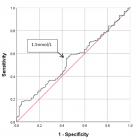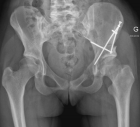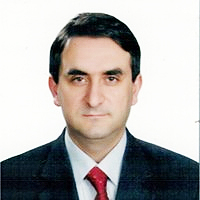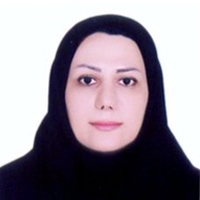Table of Contents
Simulating the dispersion of poisonous organic chemical compounds in wastewater treatment process through the active sludge method using the TOXChem model
Published on: 24th June, 2021
OCLC Number/Unique Identifier: 9124851637
Naturally, microorganisms decompose the organic material existing in nature, both in the presence or absence of oxygen. The majority of materials such as poisonous chemical compounds, heavy metals, would prevent the treatment process from taking place, lead to the entry of these contaminants into the environment results in the emergence of numerous diseases. In the present study, using the TOXChem4.1 simulation model, attempts were made to simulate a wastewater treatment plant and then assess the dispersions of contaminants including 1,2-Dimethylnaphthalene, 1,3-Dinitropyrene, 1,6-Dimethylnaphthalene, 1,6-Dinitropyrene, and 17a-ethinylestradiol (EE2) in concentrations of a common scenario. The results of computer simulations showed that the EE2 contaminant is of the highest percentage of decomposition among others, due to its wider chemical structure. Consequently, it is clear that such contaminant is of the highest mass in the sludge exiting the treatment plant. In addition, the results of the simulations demonstrated that the highest volumes of gaseous pollutants take place in the modulation and initial sedimentation units.
Assessment and sensitive analysis of biological water risks in water resources with application of classical mass transfer computations
Published on: 9th June, 2021
OCLC Number/Unique Identifier: 9124650394
Due to the urgent need for water in all parts of industrial or developing societies, water supply, and transmission facilities are suitable targets for biological risks. Given that even a short interruption in water supply and water supply operations has a great impact on daily activities in the community, the deliberate contamination of urban water resources has irreparable consequences in the field of public health, and the economy of society will follow. Unfortunately, most officials in the public health control departments in our country have received limited training in detecting accidental or intentional contamination of water resources and dealing with the spread of waterborne diseases both naturally and intentionally. For this reason, there is low preparedness in the responsible agencies to deal with waterborne diseases during biological risks. In the first step of this research, a review study has been conducted on water biological risks and operational strategies to deal with them. In the following, it has studied how Escherichia coli (E. coli) bacteria spread in aqueous media. In this regard, the kinetic model of the studied microorganism was analyzed based on the implementation of (Fick Law) in polar coordinates and the combination of (Dirac Distribution) with (Legendre polynomial) distribution. Finally, after studying the factors affecting the microbial pollutant emission coefficient, the effects of all three factors of linear velocity, linear motion time period, and angle of motion on the pollutant emission flux and biofilm diffusion time in the water supply network environment were investigated. Studies have shown that the linear velocity parameter of Escherichia coli with a nonlinear relationship has the greatest effects on the release of microbial contaminants.
A review article on artificial intelligence
Published on: 19th May, 2021
OCLC Number/Unique Identifier: 9048248509
Artificial intelligence (AI) is the emulation of human intelligence in computers that have been trained to think and behave like humans. The word may also refer to any computer that exhibits human-like characteristics like learning and problem-solving. Artificial intelligence is intelligence demonstrated by machines, as opposed to natural intelligence, which involves consciousness and emotionality and is demonstrated by humans and animals [1].
Fecal storage condition induces variations of microbial composition and differential interpretation of metagenomic analysis
Published on: 17th March, 2021
OCLC Number/Unique Identifier: 8999916387
Advances in metagenomics have facilitated population studies of associations between microbial compositions and host properties, but strategies to minimize biases in these population analyses are needed. However, the effects of storage conditions, including freezing and preservation buffer, on microbial populations in fecal samples have not been studied sufficiently. In this study, we investigated metagenomic differences between fecal samples stored in different conditions. We collected 46 fecal samples from patients with lung cancer. DNA quality and microbial composition within different storage Methods were compared throughout 16S rRNA sequencing and post analysis. DNA quality and sequencing results for two storage conditions (freezing and preservation in buffer) did not differ significantly, whereas microbial information was better preserved in buffer than by freezing. In a metagenomic analysis, we observed that the microbial compositional distance was small within the same storage condition. Taxonomic annotation revealed that many microbes differed in abundance between frozen and buffer-preserved feces. In particular, the abundances of Firmicutes and Bacteroidetes varied depending on storage conditions. Microbes belonging to these phyla differed, resulting in biases in population metagenomic analysis. We suggest that a unified storage Methods is requisite for accurate population metagenomic studies.
C3D data based on 2-dimensional images from video camera
Published on: 13th January, 2021
OCLC Number/Unique Identifier: 8899341920
The Human three-dimensional (3D) musculoskeletal model is based on motion analysis methods and can be obtained by particular motion capture systems that export 3D data with coordinate 3D (C3D) format. Unique cameras and specific software are essential for analyzing the data. This equipment is quite expensive, and using them is time-consuming. This research intends to use ordinary video cameras and open source systems to get 3D data and create a C3D format due to these problems. By capturing movements with two video cameras, marker coordination is obtainable using Skill-Spector. To create C3D data from 3D coordinates of the body points, MATLAB functions were used. The subject was captured simultaneously with both the Cortex system and two video cameras during each validation test. The mean correlation coefficient of datasets is 0.7. This method can be used as an alternative method for motion analysis due to a more detailed comparison. The C3D data collection, which we presented in this research, is more accessible and cost-efficient than other systems. In this method, only two cameras have been used.

If you are already a member of our network and need to keep track of any developments regarding a question you have already submitted, click "take me to my Query."



















































































































































